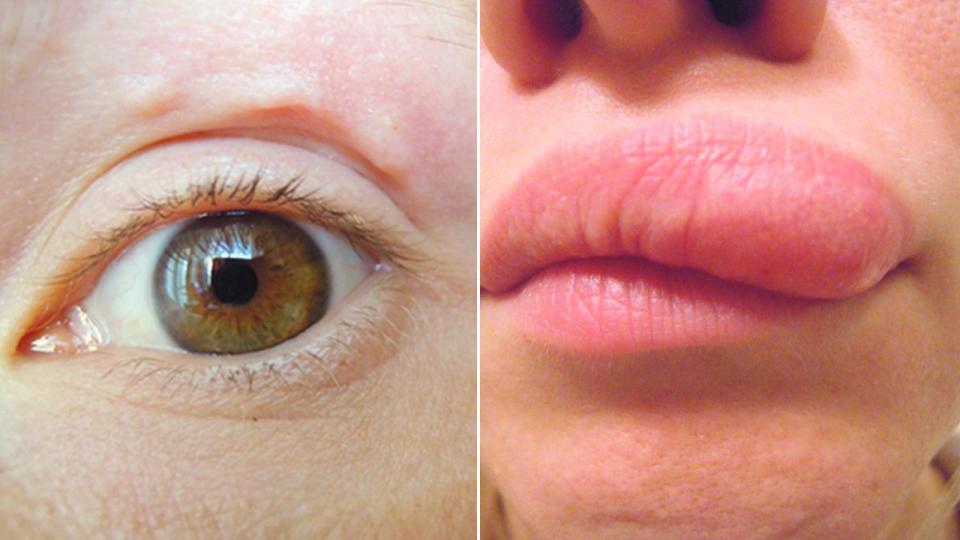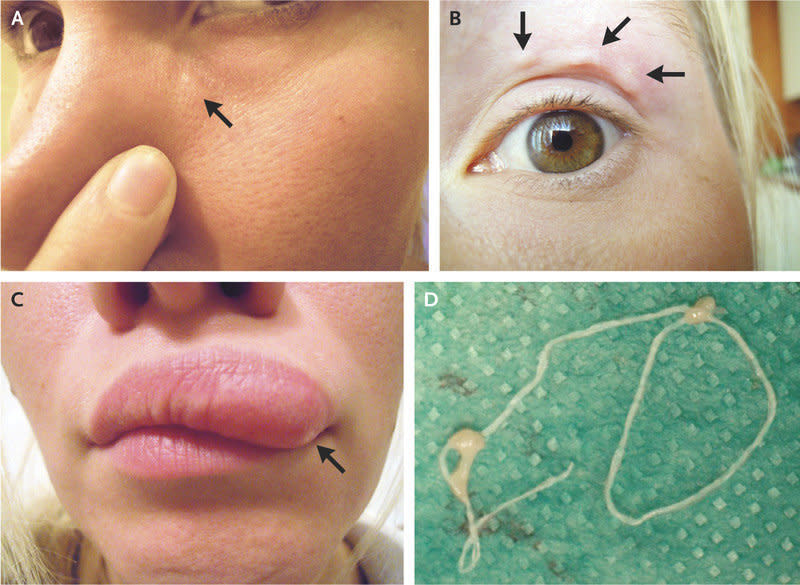Woman's disturbing discovery after noticing lump on face
A woman bugged by a mysterious lump on her face has been left even more shocked to discover the cause behind it.
The 32-year-old first noticed strange nodules below her left eye that later moved above her eye and then down to her upper lip.
According to the New England Journal of Medicine, she told doctors the nodules appeared after she visited a rural area outside Moscow, where she was bitten repeatedly by mosquitoes.
She said it caused occasional itching and burning, but had no other symptoms.
Doctors quickly identified the suspect ― a long, parasitic roundworm called dirofilaria repens typically spread by mosquitoes and hosted by dogs and other carnivores.

They removed the squirming lump from the woman’s face using local anesthetic and a pair of forceps.
It could have been worse, according to Natalia Pshenichnaya – a physician who studies infectious diseases at Rostov State Medical University in Rostov, Russia.
She told NPR that in 20 per cent of cases, the worms can “move considerable distances” such as from the upper eyelid to the buttocks.
Adding to the already grim situation, the worm can live up to two years in the human body if it is not removed.

Luckily, it rarely causes disease in humans, according to Dr Jorgen Kurtzhals, who is a professor at University of Copenhagen and Copenhagen University Hospital.
Still Dr Kurtzhals acknowledged that just the thought of such a critter can get under some people’s skin.
“A lot of people have a fear of contracting worms of various kinds,” he told CNN.
“I think it is important not to scare people. This is still a very rare condition ― despite the apparently rising numbers.”

